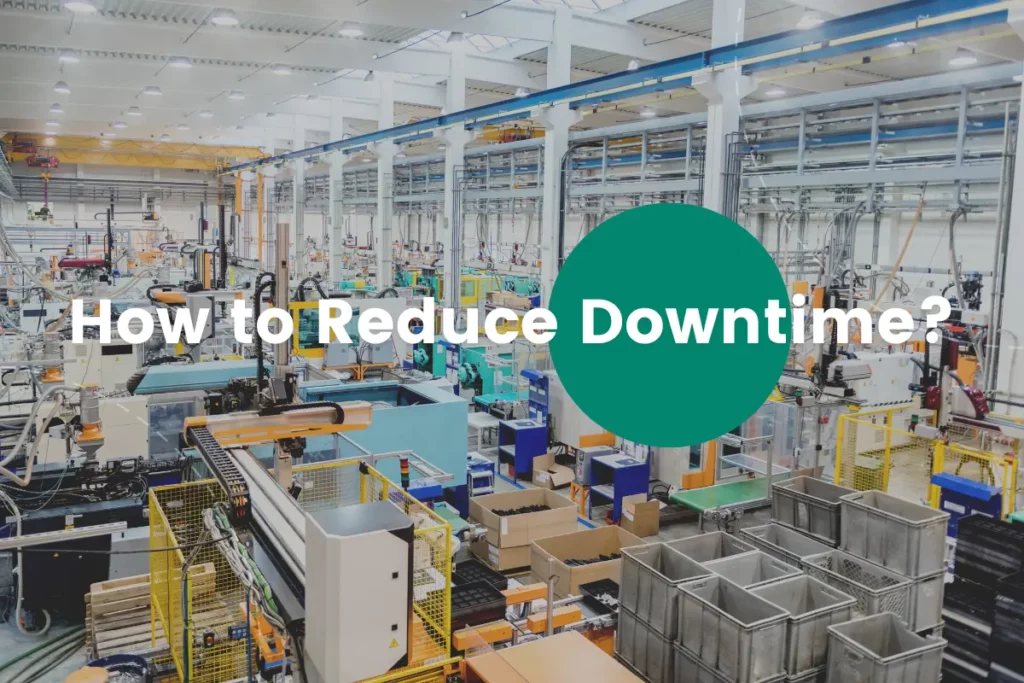Increasing productivity is at the forefront of a company’s list of achievements. However, reaching this step is not a day’s work. One sure way to ensure that a business becomes better and more efficient is by reducing downtime.
According to one study, 82% of companies from various industries have stated that they’ve had at least one unplanned downtime in 3 years (with an average of 2 outages overall). Another poll, ITIC 2021 Global Server Hardware, Server OS Reliability Report, indicated that 99% of all companies – SMEs and large businesses – have had hourly downtime losses that exceed $100,000.
So, what are the reasons for these large numbers of downtime expenses, and how can they be reduced? Keep reading to find out.
Downtime Definition
In simple terms, downtime is when the equipment is unavailable for use. For a specific company, it can reference a period when it won’t be able to produce more products due to a malfunction or other reasons that made the equipment inoperative.
It’s important to mention that downtime and breakdown time, although different, are similar and come down to the same thing. Namely, breakdown time is, in its essence, downtime that occurs because a piece of equipment broke down. However, downtime doesn’t necessarily mean that the equipment is broken – it’s simply offline and not being used.
Types of Downtime
Not all downtime is terrible. In other words, sometimes a company may use downtime as a means to an end, i.e., to increase the asset’s longevity or different ways to help the company raise its productivity.
We can differentiate between 2 types of downtime based on the anticipation of their occurrence and the reason for it. Below are each of them in more detail.
Planned Downtime
Just as the name suggests, planned downtime is calculated beforehand and implemented in the company’s regular practices. One can also refer to it as a ‘resting period’.
For example, when the last worker closes the manufacturing plant for the day and all machines are off – that is planned downtime. The equipment rests for the night and starts back up in the morning.
However, planned downtime also includes moments where you intend to have the equipment off. This includes situations when, for instance, the piece of machine needs an oil change, repairs, inspections, etc.
So, this type of downtime can sometimes bring many benefits to the business. For one, you can extend the asset’s lifespan and directly boost productivity.
Unplanned Downtime
This downtime is the other side of the coin – the type that doesn’t bring benefits to the company. Seeing that this is downtime that suddenly occurs, it naturally means that the company hasn’t predicted nor planned for it, thus the unavoidable expenses.
Breakdowns of an apparatus fall under this category. What’s more, unplanned downtimes don’t just mean costs connected to the broken machine; most of the time, these entail charges for personal injuries and environmental incidents.

Downtime Causes
We can divide the causes for downtime into those that are intended and planned and those that occur unexpectedly. Putting aside the scheduled downtime, the main focus of interest is the basis on which unplanned downtime builds.
There are a few reasons downtime happens. Here are some of the most prominent ones:
- Natural disasters – Although most natural disasters can be predicted, knowing how they’ll influence and where they’ll hit a business the most is uncharted territory. Floods, earthquakes, hurricanes, etc., can significantly damage the power supply or even directly to a company’s equipment;
- Human-cause error – Whether done intentionally or not, human errors are the most common cause of downtime in a business. A simple act of negligence like unplugging the wrong cable of a machine can significantly reduce productivity levels due to more time needed to fix the mistake. Nonetheless, these are, most of the time, easily fixable – training the employees and regular checkups do the trick;
- Low cybersecurity – Considering that all companies have shifted to the online world today, malicious online activity is a major cause of downtime. Phishing attacks and online threats can hitch the process of production;
- Configuration errors – If a machine is not devised properly, it is highly likely to malfunction. It’s important to test the configuration before implementing it in practice.
How to Reduce Downtime and Increase Productivity
How to Reduce Downtime
There are several simple ways to reduce downtime. Those are:
- Maintenance training – Educating employees on how to maintain the machines can eliminate the possibility of unexpected downtime. If an employee can repair the equipment or conduct routine maintenance activities and eliminate the costs of professional repairs, the amount of downtime will drop drastically.
- Apply risk management strategies – Preventative maintenance encompasses risk management, meaning preparing plans for routine equipment checkups so that the company doesn’t go through the hassle of unforeseen downtime. This also includes scheduling tests and inspections.
- Track maintenance – Keeping a close eye on the maintenance indicators can show ways to avoid downtime and maybe even shorten the time frame of its presence.
Can CMMS Help?
A shared element of all methods to reduce downtime is data. In each situation, a business needs to gather all information to see whether they can avoid it or how to proceed if it happens. Spreadsheets are one way to solve the issue, but with bigger companies, they are unproductive.
This is where CMMS solutions help. It allows all live data to be accessed from one place, shared, and worked around to boost productivity. If a worker spots a problem with equipment, they can flag it and instantly inform maintenance management, ergo reduced downtime.
Best CMMS Maintenance Management Software for Small and Medium Businesses
How to Reduce Downtime and Increase Productivity
Reducing Downtime With UK’s Best CMMS: Final Words
Complete eradication of downtime is unavoidable. Every company faces this problem at one point, but the key is the actions taken to reduce it to the minimum. The simplest way to do so is by utilising CMMS software.
Collabit is UK’s best CMMS software tailored to boost productivity and reduce costs in the process. Track each part of the business activities – from signed contracts with customers to assets location – from one centralised database.
Missed or prolonged downtime drastically affects the company, leaving your business endeavour behind in the market – lowering efficiency and increasing expenditures. A modern CMMS solution can help avoid the hassle and elevate maintenance strategies.





 w to Reduce Downtime and Increase Productivity
w to Reduce Downtime and Increase Productivity

